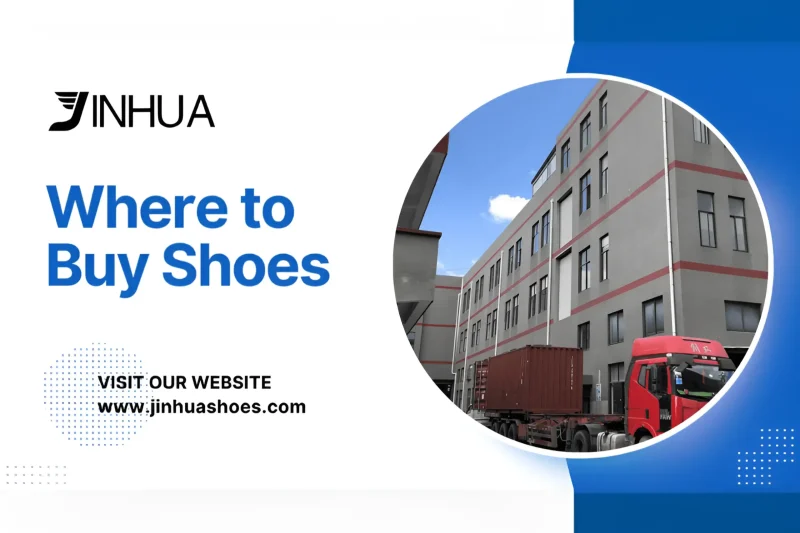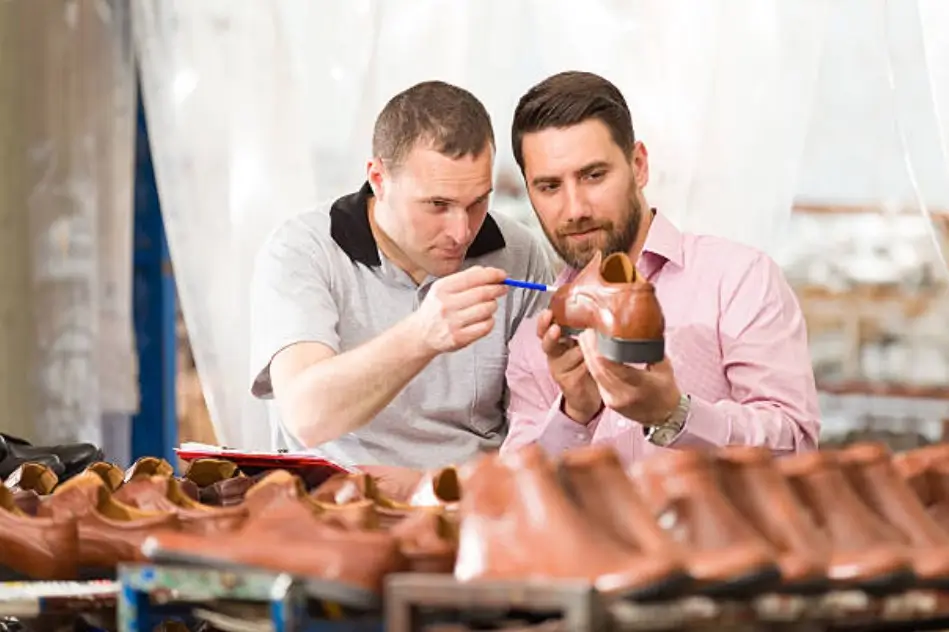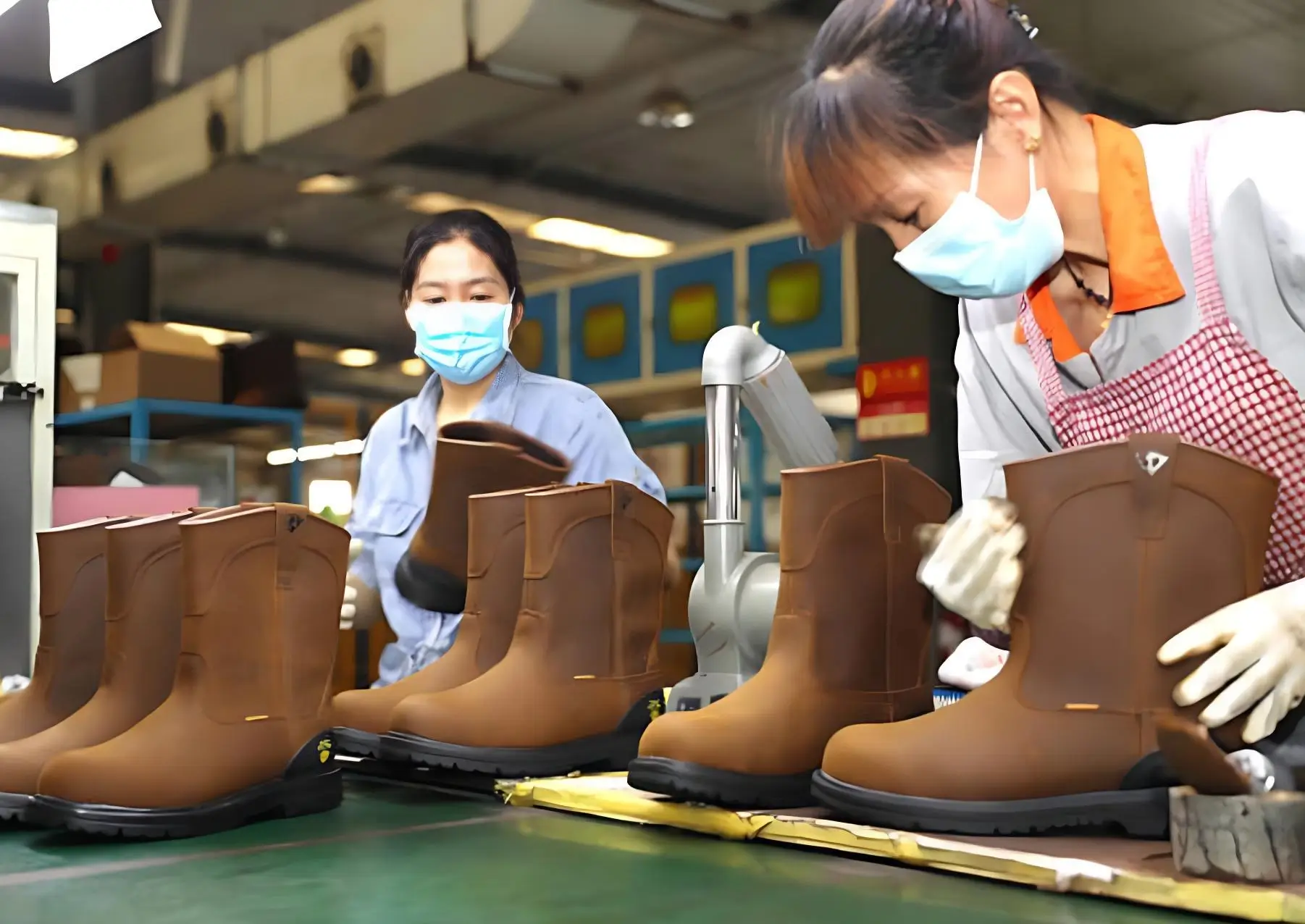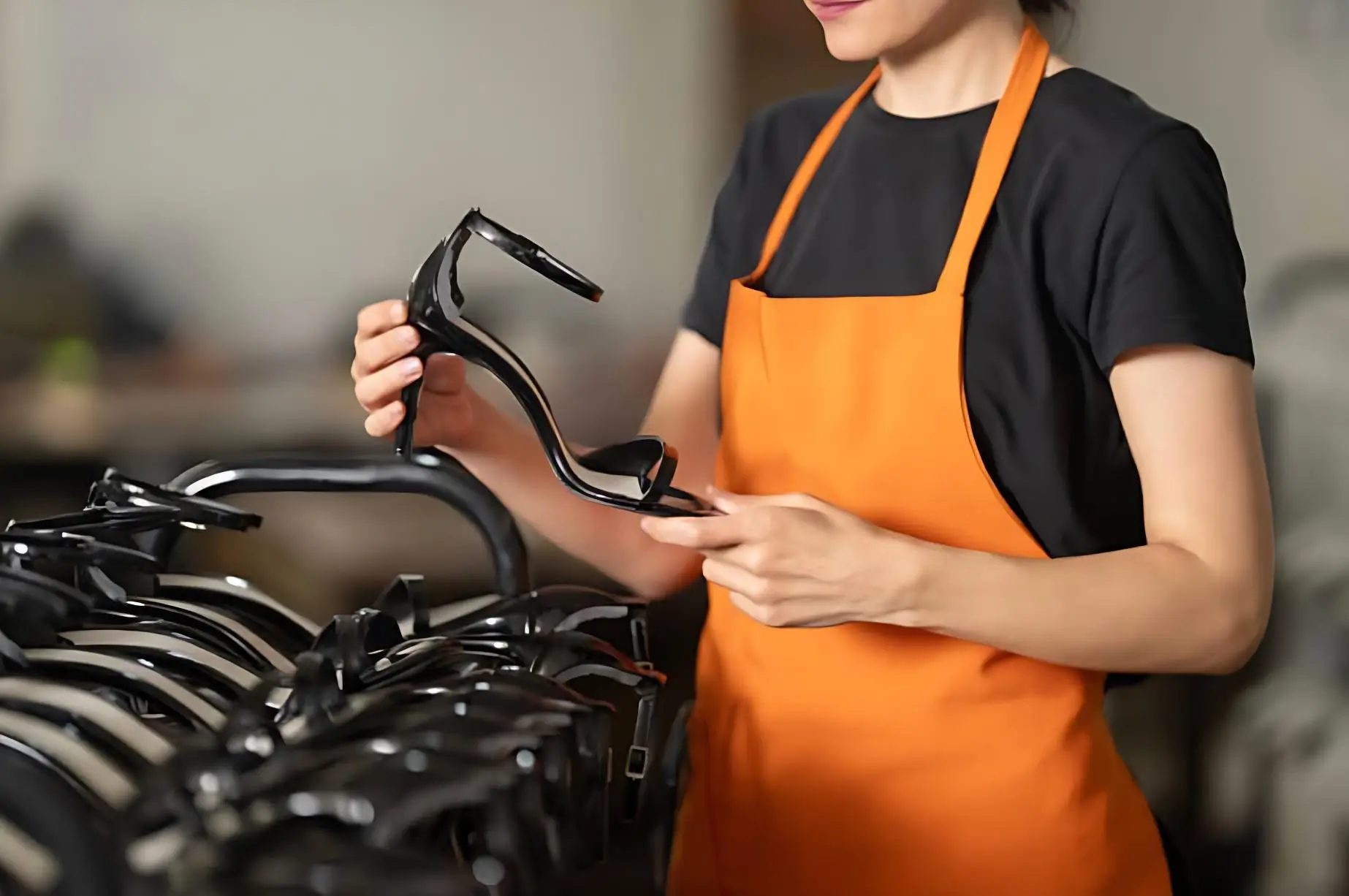As a brand owner or a footwear buyer, you know that creating a great product is only half the battle. The other, arguably more important, half is getting that product in front of the right customers, in the right place. And in today’s world, the question of where your customers buy shoes is more complex, and more critical, than ever before.
The retail landscape is changing at lightning speed. Are you developing the right products for the right channels? Is your sourcing strategy aligned with the unique demands of a fast-paced e-commerce giant like Amazon, or the quality-focused environment of a high-end department store?
I’ve spent over 15 years in the footwear manufacturing industry, and I’ve seen firsthand how a smart, channel-specific strategy can make or break a brand. In this guide, I’ll break down the key differences between sourcing for online and retail success. This is your playbook for building a profitable, channel-focused footwear collection that meets your customers where they are.
The Two Worlds of Footwear Retail: Online vs. In-Store
Before we dive into specific product categories, it’s crucial to understand that online and brick-and-mortar retail are two completely different worlds. They attract customers with different mindsets, and they demand different things from your products and your supply chain.
Sourcing for E-commerce: The Need for Speed, Variety, and “Wow” Factor
The online marketplace is a fast, crowded, and visually-driven space. Think of massive platforms like Amazon and Zappos, or a brand’s own direct-to-consumer (DTC) website.
The Online Shopper’s Mindset: Online shoppers are driven by an almost infinite selection, competitive pricing, and, most importantly, strong visuals. They can’t touch or feel the product, so the a photo or video has to do all the selling. They are often looking for the latest trends, unique styles, and a wide variety of color options.
What This Means for Your Sourcing Strategy: To win online, your brand needs a manufacturing partner who can provide:
Speed and Agility: The ability to go from a new idea to a physical sample in just a couple of weeks is a huge advantage. This allows you to react quickly to new trends.
Flexible MOQs: You need the ability to test a lot of different styles and colors without committing to a massive inventory. Sourcing partners who offer lower Minimum Order Quantities (MOQs) are invaluable for this.
“Photo-Ready” Quality: The finishing of the shoe—the clean stitch lines, the perfect color consistency, the flawless application of logos—is critical. The shoe has to look perfect in a high-resolution photo.
Sourcing for Brick-and-Mortar: The Importance of Comfort, Quality, and In-Hand Feel
In a physical, brick-and-mortar store, the dynamic is completely different. Think of a high-end department store like Nordstrom or a specialty shoe boutique.
The In-Store Shopper’s Mindset: In a physical store, the customer can pick up the shoe, feel the materials, and, most importantly, try it on. The decision-making process is much more tactile and focused on quality and comfort.
What This Means for Your Sourcing Strategy: To win in-store, your brand needs a manufacturing partner who can deliver:
Superior Materials: The “in-hand feel” of the product is a key selling point. This is where premium, full-grain leathers, soft suedes, and high-quality textiles really shine.
Exceptional Craftsmanship: Customers will be closely inspecting the stitching, the construction, and the finishing. The shoe has to feel well-made and durable.
Perfect Fit and Comfort: A comfortable fit is often the deciding factor in an in-store purchase. This requires a manufacturer with deep experience in creating well-fitting lasts (the foot-shaped molds that shoes are built on).
Product Development Strategy by Channel & Category
Now that we understand the two different worlds, let’s break down how this applies to the three core categories of footwear.
Casual Shoes & Sneakers: Winning in the High-Volume Online Market
The casual shoes and sneaker market is arguably the biggest and most competitive category, and it is dominated by online sales. This is where trends move at lightning speed.
Your Strategy: To succeed here, your brand needs to be a trend machine. The focus should be on offering a wide variety of eye-catching designs and color options that are constantly updated. Competitive pricing is also key.
What You Need from a Manufacturing Partner: You need a partner with a very strong and efficient supply chain for materials like canvas, mesh, and a wide range of synthetic leathers. They need to have a proven ability to produce high volumes with consistent quality. A factory with a large library of existing, market-proven outsole molds can also be a huge advantage, as it can save you thousands of dollars in development costs.
How JINHUA Helps: This is one of our core areas of expertise. As a leading OEM/ODM footwear manufacturer, we produce millions of pairs of casual shoes and sneakers every year. Our in-house R&D team develops over 30 new styles every month, ensuring our brand partners always have access to the latest trends. Our scale also allows us to source a huge variety of materials at very competitive prices.
Formal & Dress Shoes: Building Trust Through In-Store Quality
The market for formal shoes, while smaller than the sneaker market, is a very profitable one. This category is still heavily influenced by in-store sales, where customers can appreciate the quality and craftsmanship firsthand.
Your Strategy: To win in the formal shoes category, your brand needs to be built on a foundation of trust and quality. The focus should be on timeless designs, premium materials, and a perfect, comfortable fit.
What You Need from a Manufacturing Partner: You need a specialist. Your manufacturing partner must have a proven, demonstrable track record in high-quality leather craftsmanship. They need to be masters of classic construction methods like Goodyear welting or Blake stitching. You should ask to see examples of their work and inquire about their leather sourcing. A factory that is LWG (Leather Working Group) certified is a very good sign.
How JINHUA Helps: We are based in Wenzhou, the “shoe capital of China,” which has a long and proud history of leather shoemaking. Our skilled artisans are experts in traditional craftsmanship, and we have deep relationships with some of the best tanneries in the region. We can help you create a line of formal shoes that delivers the premium quality that high-end retailers and their customers demand.
Boots: The Versatile Hero for Omnichannel Brands
Boots are a unique and exciting category because they perform incredibly well in both online and in-store channels. They are a true omnichannel hero.
Your Strategy: The smartest strategy for the boots category is to offer a balanced collection. You should have a few trendy, fashion-forward styles (like a statement metallic cowboy boot) that will create buzz and drive sales on your e-commerce site. You should also have a core offering of classic, durable designs (like a timeless leather Chelsea boot) that will be a bestseller with your brick-and-mortar retail partners.
What You Need from a Manufacturing Partner: You need a versatile partner. You need a factory that can handle both the fast-paced demands of fashion trends and the high-quality standards of classic craftsmanship. They should be able to work with a wide range of materials, from high-shine synthetic leathers to rugged, waterproof full-grain leathers.
How JINHUA Helps: Versatility is our middle name. Our multi-functional production lines and experienced team allow us to produce a huge variety of boots. We can help you develop a fashion-forward ankle boot for your online store, and at the same time, produce a classic, Goodyear-welted work boot for your retail partners.
Partnering for Success: How JINHUA Helps You Win in Every Channel
In today’s complex retail world, you need more than just a factory. You need a strategic sourcing partner who understands the unique demands of each sales channel.
A Factory Built for an Omnichannel World
At JINHUA, we have built our business to help our brand partners succeed in an omnichannel world. We have the fast prototyping capabilities and flexible MOQs that you need to win online. We also have the deep commitment to craftsmanship and quality control that you need to win in-store.
From Zappos to Nordstrom: We Understand Your Retail Partners’ Needs
We have been helping brands sell their products around the world for over 15 years. We have extensive experience in meeting the specific compliance, packaging, and logistics requirements of major retailers and online marketplaces in both the US and the EU. We understand what it takes to be a great partner, not just to you, but to your retail partners as well.
Frequently Asked Questions
1. How does my choice of sales channel (online vs. retail) affect my MOQ?
Generally, for online-focused brands, it is beneficial to find a partner who can offer lower MOQs. This allows you to test more styles and colors. For brands focused on brick-and-mortar retail, the orders are often larger, so the MOQ is less of a concern. A flexible partner like JINHUA can support both models.
2. What are the key quality differences I should look for when sourcing for online vs. in-store?
For online, the “photo-ready” quality is key—perfect cosmetic finishing, clean stitch lines, and consistent color. For in-store, the “in-hand feel” is more important—the quality and softness of the leather, the sturdiness of the construction, and the comfort of the insole.
3. Can you help me develop a product line that works for both Amazon and traditional retailers?
Yes, absolutely. This is our specialty. We can help you develop a “good, better, best” strategy, where you might have an entry-level version of a style for a price-sensitive marketplace like Amazon, and a premium, higher-quality version for your traditional retail partners.
4. What are the packaging and labeling requirements for major online marketplaces?
Each marketplace has its own specific requirements for things like barcodes (UPCs), carton labels, and polybags. As an experienced footwear supplier, we are very familiar with these requirements and can ensure that your products are packed and labeled correctly for a smooth receiving process.
Final Takeaways: Your Action Plan for Omnichannel Success
As we’ve explored, understanding the different demands of online and retail channels is the key to building a successful and profitable footwear brand in 2025. The most successful brands are the ones who can master both.
Tailor Your Product to the Channel: Develop styles specifically designed to win online, and others designed to win in-store.
Find a Versatile Manufacturing Partner: You need a partner who can provide both the speed for e-commerce and the craftsmanship for retail.
Think Like an Omnichannel Brand: Build your sourcing strategy with the future in mind.
At Jinhua Shoes, we are that versatile partner. Since 2004, from our home in Wenzhou, China’s shoe capital, we’ve been the trusted OEM & ODM engine behind leading brands across five continents. We combine our passion for the process with a proven track record of helping brands succeed in every channel.
If you’re ready to build a footwear collection that is strategically designed for online and retail success, my team and I are here to help.
Got a project in mind? Let’s turn it into reality. Send your project details to our expert team by email to start the conversation.
📧 Email: sales@jinhuashoes.com
(You’ll get personalized expert feedback within 12 hours.)



